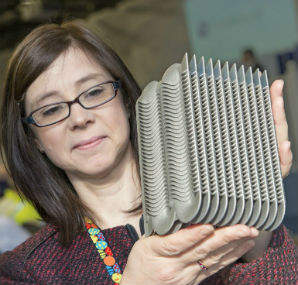Sellafield Ltd of the UK is working to combine metal and plastic 3D scanning and printing to help decommission nuclear fuel cycle and weapons plants.

Sellafield Ltd of the UK is working to combine metal and plastic 3D scanning and printing to help decommission nuclear fuel cycle and weapons plants.
Donna Connor, Head of Technical Capabilities at Sellafield Ltd, said that 3D scanning and printing offers the opportunity to custom-manufacture parts for old plants for which replacements are not available.
"With these older plants lots of parts are one-off designs, which makes it both expensive and time consuming to replace parts," she said.
Sellafield Ltd has already started using 3D scanning, using 3D blue-LED scanning technology to design a new lid for a 40 tonne Solid Waste Export Flask, which is used to ship radioactive sludge across Sellafield site.
A conference was recently held at the site, in Cumbria, to look at more ways in which they can utilize the newest 3D technology, metal printing, a process which fuses together very fine layers of metal powder with a focused laser beam to create parts and components in high performance metals. Using metal printing, parts can be printed in a wide range of metals, including titanium, stainless steel and brass.
Managing director of Sellafield Ltd, Tony Price, said: "The quality of definition of these printers means that the products they produce are actually more accurate, stronger, and more reliable than parts made using traditional techniques. This is a really exciting development for us."
Sellafield Ltd said it would use specialist contractors 3T RPD and Central Scanning to create metal and plastic components, parts and one-offs.
Photo: Donna Connor, Head of Technical Capabilities at Sellafield Ltd with a metal 3D printed model
